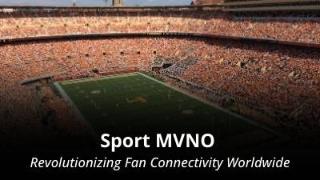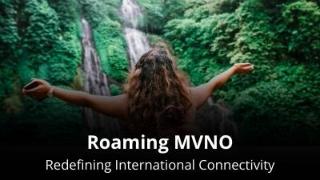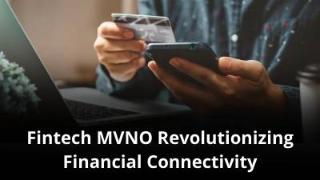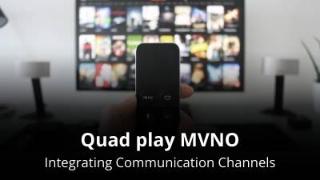Introduction about Starting a Media / Entertainment MVNO (Mobile Brands)
The Media / Entertainment MVNOs/IOT follow trends in the mobile industry, embracing content advertising on mobile phones. Such MVNOs offer free or subsidized mobile phone services to subscribers willing to view several targeted advertisements. Carriers, media brands and content companies are optimistic about the future of this model. Like Free Netflix, discounted Disney, CBS TV, etc.
The latest trend in mobile content advertising is the use of viral marketing. Through specially designed programs users can send recommendations for mobile content they like to their contact lists.
What do you need to know about starting a Media MVNO/IOT
- What are the advantages and disadvantages ?
- What are the Revenue sources and Pricing strategy?
- What are suitable segments?
- What kind of Mobile bundles are typically used?
- What kind of ARPU can you expect?
- What is the Go-to-Market Strategy?
- What are some points to think of for the Marketing Plan?
- What kind of financing is to be expected?
- What kind of MVNO type is typically used?
- What is the expected time for the launch?
- What is the expected impact of 5G?
- What is the expected impact of eSIM?
- IOT and its Relation to Media MVNOs
- Benefits of Launching Media MVNO/IOT
- Frequently Asked Questions
- Summary
What are the advantages and disadvantages of Media / Entertainment MVNOs?
Advantages: Media-focused MVNOs captivate audiences with content-driven services. Exclusive content offerings and engaging experiences attract subscribers, making these MVNOs ideal for consumers seeking entertainment and media-rich interactions.
Disadvantages: Dependency on ad revenues can be unpredictable. Balancing ad frequency to prevent user churn while maximizing revenue is crucial. Consistent innovation in content offerings is essential to retain interest.
What are the Revenue sources and Pricing strategy?
Revenue Sources: Generates revenue from ad placements within content, sponsored services, and partnerships with content creators.
Pricing Strategy: Offers free or subsidized mobile services in exchange for viewing targeted advertisements. May also provide premium, ad-free options at a higher price.
What are suitable segments/markets?
- Movie Buffs: Offering exclusive movie streaming services, early releases, and behind-the-scenes content.
- Music Lovers: Providing music streaming apps, live streams of concerts, and artist-related content.
- TV Series Fans: Offering access to popular TV shows, exclusive series, and fan-based communities.
- Sports Fanatics: Providing live sports streaming, match highlights, and sports-related apps.
- Comedy Enthusiasts: Offering comedy specials, stand-up shows, and humorous content for comedy lovers.
- Reality TV Fans: Providing access to reality TV shows, live voting, and interactive content.
- Documentary Watchers: Offering a wide range of documentaries on various topics and educational content.
- Gaming Community: Catering to gamers with live streaming, in-game bonuses, and gaming-related events.
- Anime Fans: Providing anime streaming services, manga access, and anime-themed games.

What kind of Mobile bundles are typically used for Media / Entertainment MVNOs?
Data: High demand for streaming movies, music, online gaming, and social media updates. Use case: Video streaming, music downloads, online gaming.
Voice: Low to moderate demand for voice calls, often used for urgent matters. Use case: Quick calls, urgent notifications.
SMS: Moderate demand for content alerts, promotional messages, and community engagement. Use case: Promotional offers, event notifications.
What kind of ARPU can you expect?
ARPU: High.
Why: Media/Entertainment MVNOs focus on content streaming and media services, attracting users willing to pay for premium, high-quality entertainment. Revenue is generated through subscriptions and content sales.
Where It Is Based On: ARPU is high because users pay for exclusive media content, streaming services, and premium subscriptions.
You need to work out the details in your Financial Plan.

What is the Go-to-Market Strategy for Media / Entertainment MVNOs/IOT?

Collaborate with content creators for exclusive partnerships. Utilize viral marketing, influencers, and social media to amplify reach. Offer unique, subscriber-only content to create a sense of exclusivity and value, enticing users to stay engaged.
- Target Audience: Entertainment enthusiasts, movie buffs, music lovers, and avid gamers.
- Pricing Strategy: Competitive pricing for streaming services, bundled offers with popular entertainment platforms.
- Distribution Channels: Online streaming platforms, entertainment events, and collaborations with content creators.
- Promotion: Trailer launches, exclusive previews, and interactive social media campaigns.
- Customer Support: 24/7 support for streaming issues, content recommendations, and account management.
What are points for the Marketing Plan?
Collaborates with media companies and influencers. Utilizes viral marketing and exclusive content to attract and retain subscribers. You need to work out below points in your Marketing Plan.
USP: Access to exclusive content, early releases, and personalized entertainment recommendations.
Content Creation: Behind-the-scenes footage, artist interviews, and interactive online events.
Promotions: Free trial periods, exclusive virtual events, and contests related to popular shows or movies.
Partnerships: Collaborate with production studios, musicians, actors, and online influencers to create buzz.
Feedback Loop: Analyze viewing habits, gather feedback on content preferences, and use data for personalized recommendations.

What kind of financing is to be expected for Media / Entertainment MVNOs?

Financing: High
These MVNOs heavily invest in content creation, advertising, and partnerships with media companies. High-quality content and innovative marketing campaigns are essential, demanding substantial financial resources.
Revenue comes from a mix of subscriber fees and content-related advertising.
You need to work the details in your Financial Plan.
What kind of MVNO type is typically used for Media / Entertainment MVNOs?
MVNO Type: Thick/Full MVNO
Media/Entertainment MVNOs require extensive control over their content offerings, subscriber data, and network integration. Full MVNOs provide the necessary level of control for these MVNOs to create and manage their innovative content services effectively.
See also: Different types of MVNOs
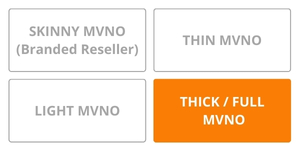
What is the expected time to launch?

Expected Time to Launch: 12-18 months
Media and/or Entertainment MVNOs involve extensive content creation, licensing agreements, and integration with media partners. Building a comprehensive entertainment platform and negotiating content deals require substantial time and effort.
You might be able to expedite the launch process with a specific Strategy: For example, pre-negotiate content licenses and partnerships before the launch. Utilize cloud-based platforms for content delivery, ensuring rapid scalability. Engage in aggressive marketing leveraging social media influencers.
What is the expected impact of 5G for Media / Entertainment MVNOs/IOT?
5G supports seamless streaming, enabling Media/Entertainment MVNOs to offer high-definition content and interactive experiences. Enhanced AR applications, live 360-degree video streaming, and real-time multiplayer gaming have become feasible, driving customer engagement. For more details see the Mobile Network section.

What is the expected impact of eSIM for Media / Entertainment MVNOs?

eSIM technology facilitates seamless content access. Media/Entertainment MVNOs can offer bundled eSIMs with subscriptions to streaming platforms, allowing instant access to content across devices. This convenience drives user engagement and subscription retention. For more details see the SIM section.
IOT and its Relation to Media MVNOs
The Internet of Things (IoT) is reshaping the media landscape, creating new opportunities for content creation, distribution, and consumption. Media MVNOs, focused on delivering rich media experiences, are uniquely positioned to leverage IoT to enhance their offerings and deepen user engagement. Here are some key applications:
Multi-Screen and Cross-Device Experiences: IoT facilitates seamless transitions of media consumption across various devices. A user could begin watching a movie on their smart TV at home and seamlessly resume playback on their tablet during their commute, all managed through the Media MVNO’s service. This creates a unified and convenient entertainment ecosystem.
Interactive and Immersive Content: IoT opens doors to more interactive and immersive media experiences. Connected devices can enhance gaming with specialized controllers and peripherals, while VR/AR headsets can create immersive environments for movies, concerts, and other events. Media MVNOs can partner with content creators to develop interactive narratives, personalized viewing experiences, and augmented reality overlays that enrich traditional media.
Smart Home Integration for Enhanced Entertainment: Integration with smart home devices allows for automated and context-aware entertainment experiences. For instance, lights could dim automatically when a movie starts, or music could be synchronized with smart lighting systems to create a more immersive atmosphere. This creates a seamless blend of media consumption and the user’s physical environment.
Optimized Content Delivery and Quality of Service: IoT can be used to optimize network performance and ensure smooth, high-quality media streaming. By monitoring network conditions and adjusting data delivery in real-time, Media MVNOs can minimize buffering and ensure a consistent viewing experience across different devices and network conditions.
New Content Formats and Experiences: IoT can enable entirely new forms of media consumption. Imagine interactive documentaries where the narrative changes based on viewer input through connected devices, or live concerts streamed with 360° cameras and interactive elements. Media MVNOs can be at the forefront of these innovations, offering unique and engaging content experiences.
Data Analytics and Content Insights: The data generated from connected devices provides valuable insights into user behavior and preferences. Media MVNOs can leverage this data to inform content acquisition strategies, personalize marketing campaigns, and develop new content formats that resonate with their audience.
By embracing IoT, Media MVNOs can move beyond simply delivering content and create truly immersive, personalized, and interactive media experiences that differentiate them from traditional mobile operators and other streaming services.
Benefits of Launching Media MVNO/IOT
Customer Acquisition and Retention: Leverage existing media channels like television, radio, or online publications to promote the MVNO service and attract new customers. Additionally, offer bundled packages that combine mobile subscriptions with discounted access to media content, incentivizing customer retention.
Enhanced User Experience: Integrate media content seamlessly with the MVNO platform. This could involve offering exclusive access to premium content, facilitating easy subscriptions to media services, or integrating interactive features that enhance the user experience.
Data Analytics for Targeted Content: Analyze user data to understand their mobile usage patterns and content preferences. This allows for the development of personalized content recommendations and targeted advertising campaigns within the MVNO platform.
Cross-Promotion Opportunities: Promote the MVNO service across various media platforms owned by the media company. This creates a synergistic marketing effect and leverages the existing audience base of each media channel.
Connected Devices for Media Consumption: Offer bundled packages that include connected devices for media consumption, such as smart speakers, smart displays, or VR headsets.
Interactive Media Experiences with IoT Integration: Create interactive media experiences that leverage IoT technology, such as augmented reality games or interactive documentaries.
Frequently Asked Questions
1. How can Media/Entertainment MVNOs effectively balance ad frequency to prevent user churn while maximizing revenue, considering their dependency on ad revenues?
Answer: Media/Entertainment MVNOs can maintain user engagement and prevent churn by implementing data-driven ad targeting algorithms and user segmentation strategies. By analyzing user preferences and behavior, MVNOs can optimize ad frequency to deliver personalized and relevant advertisements. Additionally, offering ad-free premium subscription options provides users with choice and flexibility while diversifying revenue streams beyond ad-based models.
2. Besides ad placements within content, what other revenue sources can Media/Entertainment MVNOs explore to enhance profitability and sustainability?
Answer: In addition to ad placements, Media/Entertainment MVNOs can explore revenue sources such as sponsored content, subscription-based premium services, and partnerships with content creators and media companies. By offering exclusive access to premium content, merchandise sales, and branded experiences, MVNOs can create additional value for subscribers and drive incremental revenue streams.
3. How can Media/Entertainment MVNOs leverage viral marketing and social media to amplify reach and engagement among entertainment enthusiasts?
Answer: Media/Entertainment MVNOs can leverage viral marketing and social media by creating shareable content, engaging with influencers, and fostering user-generated content. By encouraging users to share recommendations and content with their social networks, MVNOs can organically amplify reach and generate buzz around exclusive offerings. Additionally, partnering with influencers and celebrities to promote content and engage with followers enhances brand visibility and credibility within target demographics.
4. What financing options are available for Media/Entertainment MVNOs to support content creation, advertising, and partnerships with media companies?
Answer: Media/Entertainment MVNOs can access financing through a combination of venture capital investments, strategic partnerships, and advertising revenue. Securing funding for content creation, licensing agreements, and marketing campaigns requires collaboration with investors, media companies, and advertising partners. Additionally, exploring sponsorship deals, product placements, and branded content opportunities can provide alternative sources of financing to support growth and expansion initiatives.
5. How can Media/Entertainment MVNOs expedite the launch process and capitalize on market opportunities amidst evolving consumer preferences and technological advancements?
Answer: Media/Entertainment MVNOs can expedite the launch process by leveraging pre-negotiated content licenses, cloud-based infrastructure, and aggressive marketing strategies. By investing in scalable technology platforms, building strategic partnerships, and engaging in targeted promotional campaigns, MVNOs can capitalize on market opportunities and gain a competitive edge. Additionally, staying agile and adaptable to emerging trends and consumer preferences enables MVNOs to innovate rapidly and stay ahead of the curve in the dynamic media and entertainment landscape.
Summary
In summary, Media and Entertainment MVNOs offer a promising alternative for mobile service, leveraging targeted advertising to subsidize or even eliminate subscription fees for consumers. The appeal of exclusive content can be a significant draw for subscribers. However, the unpredictable nature of ad revenue necessitates a diversified approach to ensure financial sustainability.
